Bars and Tone etc. (Conform to specs)
[0.12]
Series Title Sequence:
New Teacher Survival Guide
Program Title:
The Formal Observation
ACT 1 : PRE-OBSERVATION
Beat 1: Intro to Laura Gurick
[0.10]
SEE: establishing shot of Herricks High School in the morning
LAURA GURICK IS FINISHING UP HER FIRST YEAR TEACHING CHEMISTRY AT HERRICKS HIGH SCHOOL ON LONG ISLAND IN NEW YORK.
students walking into school/in hallways
Laura in her clasroom
clock Actuality
Laura: Good morning
INTV Laura
Lower third: Laura Gurick 1st year Science teacher Herricks High School
Laura: It’s amazing to look at your students and realize that you’ve been their teacher for seven or eight months now, but it feels like it's still September and you’re just starting out.
See Laura going over her lesson TODAY, LAURA IS BEING FORMALLY OBSERVED, AND SHE’S A BIT NERVOUS.
INTV Laura GuricK
Laura: If somebody is an expert in your subject, and now they’re in your classroom. That’s usually the most nerve wracking experience.
BEAT II : Classroom Observation Overview
KAREN HUGHES, LAURA'S DEPARTMENT CHAIR, IS RESPONSIBLE FOR ASSESSING NEW TEACHERS.
NEW TEACHERS AT HERRICKS ARE FORMALLY OBSERVED FOUR TIMES DURING THE YEAR – AND THE STAKES ARE HIGH.
Someone in the back of the room who is a trained educator, who has more experience is really going to be making a judgment on you. That will affect your job performance and how people in the building view you and how your career is going to step ahead on that particular building.
TO MAKE THE PROCESS LESS INTIMIDATING, A NEW TEACHER CAN THINK OF FORMAL OBSERVATION IN THREE STAGES: PRE-OBSERVATION, OBSERVATION AND POST-OBSERVATION.
INTV Karen Hughes
For a new teacher, I think it's nice to outline things in that 3-part process, because they can see a beginning, they can see the process, and then they get the feedback and they can see the end.
Beat III: Pre-Observation Meeting
Shot Karen behind her desk See Laura entering Karens room
Actuality:
Karen: Good morning how are you?
Laura. Good how are you?
Karen: All righty.
See Karen and laura standing/ chatting
BEFORE HER FORMAL OBSERVATION, LAURA MEETS WITH KAREN TO DISCUSS THE LESSON SHE WILL BE TEACHING.
INTV Karen Hughes: The more easily a new teacher can actually build a rapport with the evaluator and [19:03] talk about the lesson and the importance of the lesson, it’ll make the entire process less painful for everybody.
Graphic: Tip:
Request a face-to-face pre-observation meeting.
Shot of Karen and Laura sitting down A FACE-TO-FACE MEETING ALLOWS LAURA TO PROVIDE VALUABLE INFORMATION ABOUT HER CLASS.
Actuality
Karen: Before we start with the academics of the lesson, can you tell me a little bit about the dynamics in the classroom?
Graphic: Tip:
Share information about classroom dynamics
Laura: It's a very dynamic class. They love to participate, in terms of the questions that are relevant to chemistry, as well as the side things that they think of and try to apply to whatever we're doing in class.
Karen: So when they are animated... is calling out in class “animated?”
Laura: We gotten to the point where I won’t answer anybody -- I'll just raise my hand... very exaggerated, and say, why are we not raising our hands.. so I try to get more of that control.
INTV Karen Hughes Hughes: In the pre-observation meeting, the teachers should be very well informed about where they want that lesson to go.
Karen: Tell me a bit about yesterdays lesson and then put it in the context of what I'm going to see today.
Graphic
Tip: Explain the objectives of the lesson plan being observed.
LAURA EXPLAINS THE OBJECTIVE OF HER LESSON AND HOW IT FITS INTO THE OVERALL UNIT.
Laura: yesterday we had a test, we had a test on bonding. So the first period was a bonding test and the second period we continued on gas laws.
Laura: So we've done a bulk of the unit already.
Laura: The goal for this lesson is to really, demonstrate and bring some tangible real life experiences... that they can grasp the concepts and use Boyles law, Charles law, and those relationships to relate to how things change.
I'm hoping to get two of the demonstrations physically done in the room. One of them they are doing themselves.
Shot of conversation w/o sound THE TEACHER SHOULD ALSO ASK WHAT THE EVALUATOR WILL BE FOCUSING ON DURING THE OBSERVATION.
Graphic: Tip:
Ask about observation criteria.
Karen: I'm looking for overall tone of the lesson, the comfort level of the students in the class, the level of engagement of the students and the level of content material and how you're presenting it. So that's what I'm going to be defining as good teaching.
Karen: If you see me writing really quickly, that doesn’t mean that what I just saw was bad. It just means that it's a point that I want to have down on a piece of paper.
Karen: just ignore me and go on with it. Ok?
Laura: OK. Thank you.
Karen: See you upstairs later on.
Laura: sounds good...
ACT II : The Observation
BEFORE THE CLASS BEGINS, LAURA CAREFULLY CHECKS THAT ALL NECESSARY TEACHING MATERIALS ARE READY.
Graphic:
Tip: Double check that all components of the lesson plan are well prepared.
Students entering the classroom
INTV Karen
Karen: To have a lesson going on where the teacher has not pulled up all materials necessary for that particular demonstration, it slows everything down, it doesn’t show a level of preparation that you would expect.
Karen sitting in the back of classroom.
See Laura starting the lesson
I'm heating up a can! Yes I am!
Graphic
Tip: New teachers should prepare a backup plan LAURA HAS A BACKUP PLAN PREPARED IN CASE THE LESSON DOESN’T GO EXACTLY AS PLANNED.
We see laura teaching, Karen observing.
Laura: If this is not going to work right now, we will have to do it tomorrow, because we're running out of time.
Ok so steam's coming out, now I'm Immersing it in super cold water. Nothing worked
INTV Laura
Laura: What was supposed to happen is, once you invert that can into an ice bath of water, the can will collapse and implode
Actuality: Laura: I'm mad at science right now, science and I dont get along today.
Intv Laura Laura: What I did instead was, I showed them a video of a different gas law.
Soundup Laura: OK what we're going to do is view a little clip of Myth busters.
Laura: I was able to teach the same concept but with pictures o the computer.
See Laura’s class finish up, and the students and Karen walk out.
URIE1672_01
Laura: totally not the lesson you expected to see , but that's how teaching goes...
ACT III : The Post-Observation
Karen and laura coming in
Hughes: Come on in, we’ll talk.
Gurick: Thanks you. All right.
Hughes: There is obviously a comfortable feel in the classroom. You certainly have a number of kids who are characters in there.
Gurick: Yes I do.
Over shot of conversation
NOT de-focused THE POST OBSERVATION MEETING IS CRITICAL. IT GIVES LAURA AN OPPORTUNITY TO EXPLAIN DECISIONS SHE MADE DURING THE LESSON
Hughes: Let’s talk about the homework, if we can go back to the beginning.
Hughes: You had your goggles on you were ready to go, you asked them to pull the homework out but you didn’t walk around the room, you didn’t check it.
Gurick: No I didn’t.
Graphic: Tip
Explain teaching decisions
Gurick: Because today I was up at the front of the room with the Bunsen burner trying to get that lit and going, I didn’t, I wasn’t leaving that area,
Just because of the Bunsen burner safety issue, so didn’t feel that it would be appropriate to go around the room and check homework.
SEE shot of conversation.
DURING THE POST OBSERVATION MEETING THE TEACHER SHOULD EXPLAIN ANY UNEXPECTED CHANGES TO THE LESSON.
Laura: I think they were more burnt out than I thought they were yesterday because I tried to teach after their test.
Laura ... especially when I was going around I saw a couple of blank papers and I asked one of the girls, I said you know, What are you thinking?’ she goes, I really just want to look back in my notes.’
Laura: So today was a lot of reviewing and asking questions
Actuality: which one are we doing? Since you don't have it down, this would be a really good tie to see if you can do it.
INTV Karen Hughes Karen: In the middle of the lesson, when she realized the students did not grasp the material, she did a good job of doing a balancing act and bringing them back and reinforceing what they needed.. so that tomorrow's lesson – she may be a day behind, but students will understand the material better.
Laura: It was not one of my best teaching days of teaching..
Karen... No its not a criticism... it's just that they actually saw the wheels in your head and how you actually got there.
INTV Karen 2
Graphic:
Tip
Be self reflective and open to constructive criticism.
Hughes: [TIP] I have found that the teachers that are most successful are the teachers that are most self-reflective
So they have given thought to the lesson that they taught, before they sit down and have the conversation with me. Sometimes what the teacher thinks is a short coming, is ok for me... and I focus on something else.
I have to tell you that, what you couldn;t hear, was the girl in the back, after you did the popsicle stick with the PTV – she leaned over to Cassandra and said “That was great, i'm so glad that she slowed down, now I get it.”
For their goals, where they came in starting today, was an effective lesson.
Laura: OK. Good.
Karen: Relax, it’s done.
It was a nice lesson.
Laura: Thank you
CONCLUSION
See Karen and Laura getting up and see laura leave,
Karen typing in her office LAURA IS GIVEN A COPY OF THE WRITTEN EVALUATION AND A COPY IS PLACED IN HER FILE TO BE USED FOR HER YEAR-END ASSESSMENT.
TEACHERS THAT DON’T AGREE WITH THE ASSESSMENT SHOULD LET THE OBSERVER KNOW IMMEDIATELY.
Hughes: The onus is on the teacher to reach out to the person who’s observed them to find out how they would have like to have seen the lesson go and what areas of improvement they would like to see and what strategies they would suggest that the teachers follow next time they're being observed.
Hughes: I have never observed a class that was perfect and I've never taught a class that was perfect. It is always supposed to be the goal of the teacher, that you can always try to teach that lesson the next time better.
Request a face-to-face pre-observation meeting.
Share information about classroom dynamics
Explain the objectives of the lesson plan being observed.
Ask about observation criteria.
Double check that all components of the lesson plan are well prepared.
New teachers should prepare a backup plan
Explain teaching decisions
Be self reflective and open to constructive criticism.


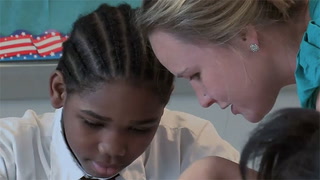
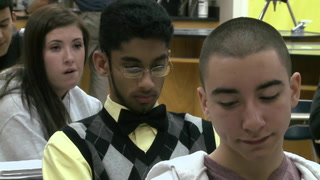

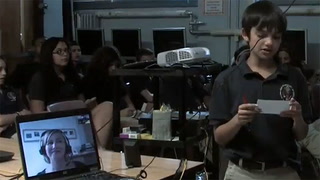
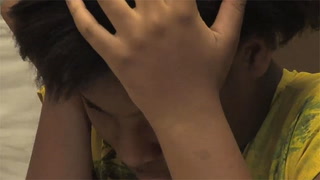
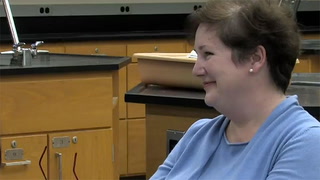
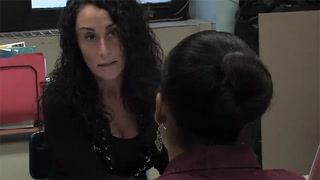








29 Comments
Henry Wong Dec 9, 2020 5:21pm
1. During pre observation meeting, one should explain the object od the lesson.
2. Backup plan is necessary just in case something goes wrong with your lesson.
3. The teacher should be self reflective and open to criticism, it is an opportunity to learn from yourself and potentially be aware of something new how you do something.
Giselle Dzay Nov 16, 2020 10:02pm
This video was very useful in showing the different parts of a formal observation and it made me feel better about my future formal observations. I liked the fact that it broke down formal observation into three parts: pre observation, observation, and post observation. This video was also useful in reminding me that teaching is a continuous process of self reflection and that there is never a perfect lesson. There is always room for improvement and a feeling of wanting to do better for your students.
Shaun Jones Nov 16, 2020 5:13pm
This video provided me with a clear idea of what an observation would be like. This helped me think about how I would like to run a classroom in the future. It was helpful to see the observation broken down into 3 parts to make the overall process much easier. I learned that I should set clear objectives and make sure that I have a backup plan just in case the lesson doesn't go as planned. The teacher created a comfortable environment and fostered collaboritive work in teh classroom. Its important to be reflective and work to progress as an educator that effectively communicates information.
Shayne Hall Aug 10, 2020 10:59am
This video is excellent in that it gave great information and tips on what to expect during your formal obesrvation.
TONIA THOMAS Jul 21, 2020 3:10am
I thought that the observer gave her pointers on what she was looking for before her class started so that she would not be so nervous was a great idea.Breaking it down into '3 parts was a good idea.pre observation, observation and post observation.The teacher did a great job and having a video just in case science fails..was great the students got a chance to see it on video if it actually works